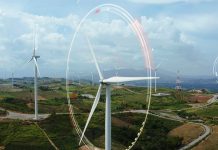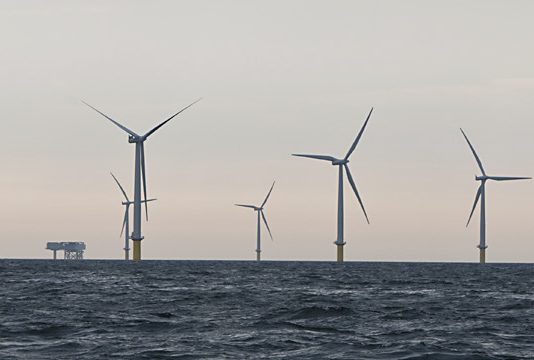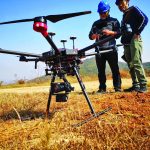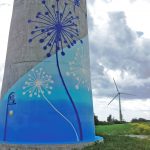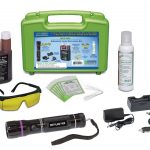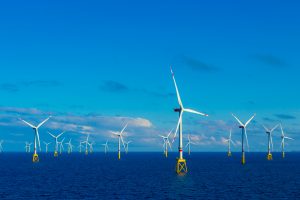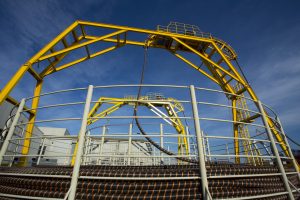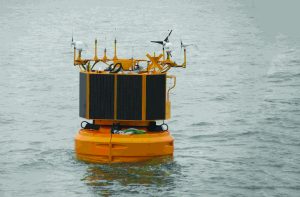Pressure from wind owners to shift from availability driven operational models to performance optimized strategies has never been stronger. The trick, however, is being able to carefully balance OPEX reduction with optimization opportunities to protect efficiency and safety portfolio wide.
To provide critical forward-looking insights, New Energy Update sat down with four of the leading executive speakers ahead of the 10th Annual Wind Operations Dallas 2018 conference & exhibition (April 16-18) to share their perspective on where they see opportunities and challenges for optimizing wind in their own portfolios and about current trends in wind-farm operations and maintenance (O&M).
Those executives include Duke Energy’s Jeffrey Wehner, Excelsior Energy Capital’s Matthew Burt, Pattern Energy’s Chris Shugart, and Elawan’s Aday Magec.
 Is your business starting to look at O&M earlier in the lifecycle? If so, what impact is this having on your bottom line?
Is your business starting to look at O&M earlier in the lifecycle? If so, what impact is this having on your bottom line?
Matthew Burt: Absolutely. Often developers have fairly aggressive assumptions, so we spend a lot of time looking at the OPEX costs and the best strategies to drive the cost down to the point where it is as low as possible, but you can still maintain the asset efficiently.
Chris Shugart: Our development, construction, and operations teams work together to ensure we’re putting forth the most competitive projects we can in a competitive business, while also being confident we can deliver on the economics we model for them.
When we have new challenges, such as difficult weather or a unique location, we properly consider all those impacts, not throwing an irrational amount of money at challenges that make the project uncompetitive just because we haven’t evaluated it properly.
Aday Magec: Yes. Our view of O&M starts with financial process, even though it is not a substantial amount. If you are able to speak with your service providers earlier, in our experience it is truly positive for wind-farm performance.
Do you have any key success stories you can highlight from production gained or costs reduced in the past 12 months your business is proud of?
Jeffrey Wehner: Our organization continuously strives for operational efficiencies in our legacy wind fleet and on behalf of our customers. Some of the most effective cost reduction techniques we have implemented include optimizing fleet scheduling and planning functions, which are enabled by user-friendly digitized solutions. As a result, we have seen significant improvement in KPI for man-hours spent on unplanned work.
MB: On the off-site side, there’s some big opportunities for large savings. We’ve looked at management approaches, parts supply, insurance, and property taxes. On the site side, there’s both performance issues and the potential for AEP increases.
CS: Certainly, our biggest milestone has been that 2017 was our first year going ‘self-perform’ at almost 1,000 MW of our fleet and using our own technicians for core service activities.
This has really allowed us to achieve a superior level of alignment on safety, quality and bottom-line results.
AM: We have a Nordex wind farm, and we agreed with the service provider manager to try to get more proactive about working in low wind. It ended up being our best-performing wind farm in North America.
Are there any new job titles/departments in your business this year? What are they focused on and why are they necessary?
MB: We’re a new company, so I have the luxury of being able to hand-pick the roles and the people for our exact needs. When we pick a team, each team member would have a different skill set from the others, to improve working efficiencies.
CS: Our newest areas of growth and focus are in supply chain and training: areas that are secondary when you have most of your O&M outsourced but quickly become important as you take on more scope as an operator, even if you’re not going full self-perform.
I think we’ll see enormous growth, particularly, in supply chain and procurement in our industry as more and more of this scope shifts away from original equipment manufacturers and to owners.
Everyone keeps talking about “big data,” but what practical applications are you looking for from big data to help your field teams this year?
JW: Duke Energy Renewables has implemented digital solutions that are taking big data and turning it into big intelligence and putting actionable tools into the hands of our field employees. These applications include real-time process overviews seen through mobile devices and learning algorithms that can spot and categorize failures and predict rotating equipment failures far into the future.
MB: Big data has been a key part of my business approach for many years now. When big data is used correctly, it’s a very powerful tool. The key to doing that is having an efficient and mostly automated way to process it, and to give clear outputs.
CS: While a lot of the hype is around advanced things like predictive analytics, which we are absolutely investing in, equally important is how you put data in the hands of your field operations teams.
AM: It seems like everybody is talking about it, but nobody sees real applications. We think it would be good if we are able to get data to get the turbines to correct themselves based on the behavior of neighboring turbines.
What’s the most exciting new/improved technology you would like to use if money was no object?
MB: For me, there’s nothing really mind-blowing that’s out there at the moment. There are some good ideas, but you might spend $5,000 and only save $1,000, so there’s no point in doing it. It’s probably improved control systems, slicker interfaces for the techs.
CS: We need to continue to advance drivetrain technology to have a reliable life, to better detect when that’s not going to be the case, and for cost-effective proactive repair solutions prior to failure.
AM: We have a farm in Maryland that has a 3 percent loss because of icing. If I could, I would get blade de-icing technology installed. It’s a proven technology, but it’s six digits in cost.
What are you most excited to learn more about at Wind Operations Dallas 2018?
MB: These events are a way to gauge how the industry has evolved, especially how the service companies and supply companies are expanding or improving their offerings. It’s a good way to touch base with those types of companies.
CS: Networking with fellow operators and sharing best practices across the spectrum, from safety, data systems, and analytics to the market for parts and services, and component technology trends.
AM: What I would like is to try to understand more about the strategies used by companies like us, and understand lessons learned from mistakes. I’m interested in ways to master turbine performance in real time.
What value to you gain from networking at these events?
MB: Although you have relationships with people, if you’re not directly doing business, you don’t really talk that much during the year, so for me it’s a good way of maintaining relationships with industry peers and other operators.
AM: What makes attendance worthwhile is to meet face-to-face with people who can help me out with day-to-day issues with my technology.
Where do we go from here?
As the PTC winds down, all owner operators must pivot their strategies hard to ensure they’ll boost profits long-term. Remember, “this is about profitability, not availability. And that’s only going to work with all our efforts in optimizing production” (Patrick Woodson, Chairman for Wind, E.ON Climate & Renewables North America at Wind O&M Dallas 2017).
For owners, a successful strategy to secure revenue growth will rely heavily on attacking wind operations from three fronts: lower LCOE, increase AEP, and leverage transformative data-driven decision making to optimize profits. The learning curve to balance all three, as well as secure site safety and enhance turbine reliability, will require no mean feat of ingenuity to master.
For vendors, a failure to act fast and pivot equally towards innovation will leave them adrift as the rest of the market competes for a slice of the booming $17 billion-plus wind O&M pie. What’s more, they must build and nurture a network of essential relationships with key buyers — no small task when the major budget holders reside in one of the most fluid, fast growing, and dynamic of job markets in the world.


















